The IoT Devices Market Anticipated to Reach $1.1 trillion by 2026
In 2019 the number of active IoT devices installed worldwide was 26.66 billion, this is expected to reach 35 billion by 2021
What Is the Internet of Things (IoT)?
The internet of things refers to a system where billions of physical and digital computing devices around the world are connected to the internet that collect, transfer and share data without requiring any human interaction. Each IoT component has a unique identifier (UID) that makes it recognizable. Some of the applications of IoT are:
Consumer IoT : light fixtures, home appliances and voice assistance
Commercial IoT : smart pacemakers,monitoring systems and vehicle to vehicle communication
Industrial IoT: digital control systems, statistical evaluation and smart agriculture
Infrastructure IoT: smart cities are connected through sensors, management systems and apps
Military IoT: robots for surveillance and human-wearable biometrics for combat.
Benefits of Internet of Things Services
With wireless networks being ubiquitous and computer chips super-cheap, it is possible to turn anything and everything into an IoT “thing”. The many benefits of IoT begin with the amazing connectivity that permits devices to stay connected to a central terminal and allows us to check the information from our phones. Having IoT enabled devices is efficient as it allows instant access to information which in turn frees up time and resources. IoT connected devices are basically computers sending data real time and are responsible for making life easy. They are of tremendous importance in the health industry as they ensure quick response to emergencies and assistance with ailments. Our smart devices are set to be able to predict our tastes and preferences shortly and increase our quality of life.
There are 127 new IoT devices connecting to the Internet every second.
Industry experts have started calling IoT the Industrial Revolution 4.0. It is going to usher in advanced degrees of automation, customization and connectivity.
“If you think that the internet has changed your life, think again. The Internet of Things is about to change it all over again!” – Brendan O’Brien
IoT is Reinventing Businesses
IoT is not just about establishing connections between devices and systems, it is opening up a whole new world of products and services that did not exist before. The benefits of IoT go deeper than profit and revenue growth, they are also positively impacting businesses in various ways. More data means more opportunity, businesses have expanded in the area of preventive maintenance, tracking and tracing of assets and automatic product upgrades or updates. The data from sensors installed in production systems, assembly lines, warehouses and vehicles help managers keep track of their operations and the data from products helps to monitor and improve product performance leading to innovation and growth. IoT with visual analytics is providing new ways to gain insight into customer behaviour and requirements. IoT is giving companies the opportunity to not only manufacture products but also offer ongoing services to monitor the performance of these products and provide predictive maintenance. Entreprises are now looking at greater efficiency, flexibility and agility.
IoT Consumer Benefits
Making your products IoT friendly enables consumers to have smarter and communicative homes,offices and vehicles. Smart speakers make it easier to play music, set timers and get information, while home security systems make it easier to monitor what’s going on inside and outside homes. IoT helps smart thermostats help heat up homes and light bulbs turn on even when no one is at home. On a larger scale, sensors can help us understand how noisy or polluted our environment is, self driving cars and smart cities can change the way that public spaces are built and managed.
FAQs on IoT
Making your products IoT friendly enables consumers to have smarter and communicative homes,offices and vehicles. Our Internet of things services enables companies to automate processes and reduce labor costs. It also cuts down on waste and improves service delivery, making it less expensive.
What is M2M and why is it important?
What is an insight in the IoT context?
Data collected from various sensors and devices will inform you when something has happened or is about to happen. This information is an insight. It can be resolved by putting an action plan in place for example predictive repairs
Where does data science fit with IoT?
Data science and specifically analytics is used to extract insights from the data. For example a rare or random-looking pattern in a data stream are early warning signs of failure.
Why do businesses need to learn about IoT?
What are example applications of IoT?
What are the advantages of IoT?
What is the future of IoT?
Areas using IoT that have been growing include security and surveillance,supply chain management, industrial asset management, energy management and fleet management. It can manage services of devices, product evolution, reordering of products, and predictive maintenance.
IoT Deep Dive
IoT and data
Considering that all IoT devices and sensors collect data, this has to be sent somewhere. The amount of data created by IoT devices is expected to grow rapidly in the next few years. It is estimated that there will be 41.6 billion IoT connected devices generating 79.4 zettabytes of data in 2025 Currently most of it is video surveillance but industrial and medical data is expected to catch up soon. On the horizon is data collected from drones, and self driving cars. This means that IoT is a significant driver of big-data analytics projects and IoT metadata is a growing source to be managed and leveraged to make sense of random events.
IoT and smart cities
Smart cities use a vast number of IoT enabled devices, sensors,lights and metres to collect and analyze data which allows planners to make improvements in infrastructure, public utilities and services. Smart cities are able to provide their residents a more efficient and higher quality lifestyle. They include smart lighting, and other intelligent technologies to achieve an energy-efficient and environmentally friendly infrastructure.They also include air management tools that collect pollution data in real time and forecast emissions. IoT is used to implement an intelligent transport solution to control traffic flow and intelligent parking solutions to ease congestion. Smart waste management systems are also incorporated to optimize the efficiency of waste collection and reduce operational costs.
IoT data and artificial intelligence
Artificial intelligence has begun playing an important role in IoT applications and deployments
Smart sensors and devices generate vast amounts of information. AI analyses this data and identifies patterns, detects anomalies and makes more accurate and faster operational predictions than traditional methods. AI applications for IoT, especially in sectors like industrial manufacturing and offshore oil and gas offer predictive maintenance which can mitigate the damaging economics of unplanned downtime.They increase operational efficiency by predicting conditions and identifying parameters to be adjusted to maintain ideal outcomes.Besides spawning new products and services, the pairing of IoT with AI also enhances risk management predictions to enable rapid response.
Industrial Internet of Things
A subset of IoT is The Industrial Internet Of Things (IIoT), it is also considered as the fourth industrial revolution or Industry 4.0. IIoT is essentially the use of IoT technology in a business setting. The concept is the same as for consumer IoT devices but in this case a network of sensors, connected devices, wireless networks, big data and AI are used to collect, transmit and analyze data and extract insights in order to optimize industrial, manufacturing and commercial processes. It can be used to increase workforce productivity, improve safety, save costs and streamline operations. When introduced across the entire supply chain, it creates a large impact in the delivery of materials and management of production from start to finish. It also allows manufacturers to sell predictive maintenance along with their products.
IoT and Health
IoT has been instrumental in opening up a world of possibilities and innovation in the health care sector. Ordinary medical devices when connected to the internet can collect invaluable additional data which gives extra insight into symptoms and trends while keeping patients better connected to their doctors. IoT has enabled remote monitoring, virtual visits, keep track of staff and patients, enable remote care and in general give patients more control of their lives and treatment. Medical devices that use IoT enable more accurate diagnoses, fewer mistakes and lower costs of care. In the healthcare industry IoT has made a tremendous impact by automating patient care workflows, analyzing and disseminating data, reducing inefficiency and errors and streamlines the overall process.
IoT and Agriculture
Smart agriculture includes agriculture and food production practices that are powered by the Internet of Things, big data and advanced analytics technology. There are many applications of IoT in agriculture such as sensor based systems for monitoring crops, soil, light, humidity, temperature,livestock, storage facilities and any important factor that influences production. Smart agriculture vehicles, drones, and autonomous robots can also be connected to IoT to inform agricultural practices. IoT can be used in environmental monitoring of farms by analyzing data from weather, dam levels, river levels, and water metering. RFID tags can be used to monitor stock and their movements. Automation of irrigation systems, smart greenhouses and hydroponics also benefit from the technology.
In 2023, global IoT spending is predicted to hit $3 trillion. By 2025, spending is expected to increase to $5.1 trillion, continuing the increased rate of growth year-over-year.
IoT adoption
- Investigating your business context and tasks/problems you want to address with IoT implementation.
- Defining what data must be collected to meet project goals.
- Hardware consulting.
- Planning a data center with proper data processing and mining capabilities.
- Setting up a data pipeline.
- Functionally scoping each solution component: smart things, data warehousing and analytics solutions, control and user-facing apps.
IoT ecosystem setup
We design and implement layered IoT architectures:
- Data generation layer: configuring IoT devices and connecting them to the network.
- Edge computing: building a decentralized network to keep data processing close to where it originates, which allows for fast local decisions.
- Data center setup: modelling a data processing environment for heterogeneous IoT data, applying machine learning and data science algorithms to identify patterns and trends needed for the solution of required problems.
- End-user app development: creating different types of apps (web, mobile, VR/AR, smart screens, voice assistants) to serve visualized data insights.
- Development of control apps: creating web and mobile apps enabling remote control of IoT devices.
IoT application management
- Technical support and troubleshooting: quick identification of data quality, application availability and usage issues.
- Cloud management: monitoring and optimization of cloud resources consumption.
- Security management and regulatory compliance: network, server, database, and application vulnerability assessment; infrastructure compliance review; DDoS and APT prevention.
- IoT solution evolution: application updates and expansions to support your changing business needs.

Let's Talk!
For any queries about Kilowott’s services/solutions, please complete the form below and we will get back to you soon.


